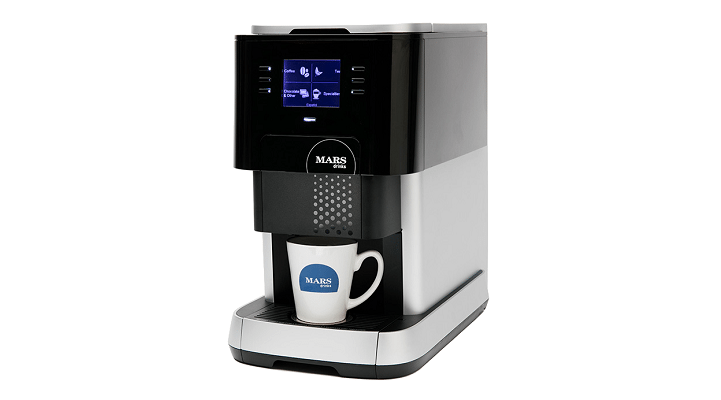We'll find out this afternoon if InSight survived its "Seven Minutes of Terror". Here's a handy primer on the mission.


We'll find out this afternoon if InSight survived its "Seven Minutes of Terror". Here's a handy primer on the mission.
Comments are closed.
http://globalsportssalaries.com/GSSS%202018.pdf
Timberwolves with the 12th-highest average salary of any team in all of professional sports. That’s probably before the Butler trade, I’d imagine.
I would say that’s shockingly bad, but with the Wizards and Hornets being even worse off, it’s just kind of regular NBA bad.
Also I would be legitimately interested to see what happened with MLB salaries if there was a hard cap, no draft, and no contracts could be longer than 3 years guaranteed. Would we still see huge megadeals? Or would salaries gravitate closer to a league average of, say, $6M/year, and teams would try to plug up their weakest links versus going all in on star talent? As it is, I think paying a ton for free agents is rational because they don’t come available too often, but it would be interesting to see the impact of rookies getting fair deals, shorter contracts making it easier for teams to purge dead weight, potentially a lot more active free agency, and the end of luxury payrolls.
MLBPA would be totally against it, but I don’t think that would be a terribly rational position. Relativelt a handful of players actually cash in on mega-contracts and a bigger problem for the players is getting shafted for the first 3-6 years of their major league deals. Tie the hard cap to revenues to keep the teams honest and the 3-year max contract length enables the hard cap to work because bad teams can’t get in a cap hell situation for more than 3 years. And even then, you’d expect a team could re-tool in 1-2 years rather than a full 3. No draft means no incentive to tank. The hard cap means smaller markets can compete without needing to tank and lean on the rookie pay scale to game the system.
Ubelmann for Commissioner.
I remember there was a time when the Yankees would be embarrassed to be 31st on that list (and well down on the list of just MLB teams).
Is he in The Best Shape of His Life?
Searching for the Mendoza Line of on-base percentage
HOT STOVE ACTION!
Cheaper Logan Morrison?
That was my thought too.
On the surface, they might seem comparable. Cron increased his HR rate from 4.3% in 2017 to 5.4% last season, but the change in his strikeout rate was negligible (25.7% to 25.9%). His GB/FB ratio actually increased (0.50 to 0.71). While his LD% dropped from 29% to 24%, his HR/FB rate improved from 11.7% to 17.1%. Morrison’s outlier season resembles the increase in HR rate, but with correlated decrease in GB/FB rate, an small-but-significant increase in LD%, and a bigger jump in HR/FB rate.
Travis Sawchik wrote a piece for Fangraphs detailing some of the differences between Cron and ex-Rays LoMo & Corey Dickerson at the beginning of spring training last season . It’s worth reading. Likewise, Jeff Sullivan’s piece from earlier this month gives some perspective on the non-financial reasons the Rays might have for letting Cron go.
I think the best part is being right-handed vs. left-handed. Haven't seen the splits, but I would think right-center in Target Field would be death to left-handed power hitters.
My sense is that right-handed hitters have more favorable park factor in Minneapolis than their sinister counterparts, but that the degree of difference is not as huge as we might think.
In 2016, the 4ltr had Target Field’s five-year park factor for home runs at 1.043 for RHB, against a 0.850 for LHB. The Baggie tribute wall was cited as the primary depressant, as the distances down the line in right & out to right-center were actually shorter than league average. Last year, Fangraphs’ Mike Podhozer compared three different PF metrics (Fangraphs’, BP’s, and StatCorner’s), and while all three agreed Target Field is kinder to RHB than LHB, they differed in degree. More surprising, though, was that the difference between LHB PF measures for Target Field was basically average compared to the league, and that it is — eyeballing here, but this seems at worst — at the top of the lowest third for LHB PF. The hardest places for LHB are clearly San Francisco, Boston, Oakland, Anaheim, Pittsburgh, and Chicago (NL, without the wind).
Those park factors are all over. BP and StatCorner think Target Field is friendlier to righties than Coors.
Cool. I like it. This might be the first player the Twins have acquired that played here in San Bernardino for the Inland Empire 66ers that I know we've seen play live. He was definitely the big bat in their lineup back then.
Landing confirmed.
Amazing to have an image available within the first few minutes. Cubesats MarCO-A and -B seem to have been a big success.
Right? When they said they were waiting for the image to load, I was like which image now?
They can land something autonomously on another planet but can't even remove* the dust cap.
* Yes, I know why it's still there.
And then there's the Venera program's lens cap problems, including the one that popped off directly below the soil compressibility tester, making it unusable.